Tri-N-hexylamine
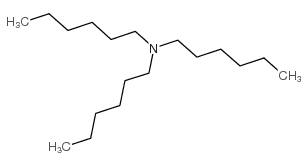
Tri-N-hexylamine structure
|
Common Name | Tri-N-hexylamine | ||
|---|---|---|---|---|
| CAS Number | 102-86-3 | Molecular Weight | 269.50900 | |
| Density | 0.794 g/mL at 25 °C(lit.) | Boiling Point | 150-159 °C12 mm Hg(lit.) | |
| Molecular Formula | C18H39N | Melting Point | <-75ºC | |
| MSDS | Chinese USA | Flash Point | >230 °F | |
| Symbol |


GHS07, GHS09 |
Signal Word | Warning | |
| Name | tri-n-hexylamine |
|---|---|
| Synonym | More Synonyms |
| Density | 0.794 g/mL at 25 °C(lit.) |
|---|---|
| Boiling Point | 150-159 °C12 mm Hg(lit.) |
| Melting Point | <-75ºC |
| Molecular Formula | C18H39N |
| Molecular Weight | 269.50900 |
| Flash Point | >230 °F |
| Exact Mass | 269.30800 |
| PSA | 3.24000 |
| LogP | 6.02930 |
| Vapour density | 9.3 (vs air) |
| Vapour Pressure | 0.0103mmHg at 25°C |
| Index of Refraction | n20/D 1.442(lit.) |
| InChIKey | DIAIBWNEUYXDNL-UHFFFAOYSA-N |
| SMILES | CCCCCCN(CCCCCC)CCCCCC |
Synonym: Section 2 - COMPOSITION, INFORMATION ON INGREDIENTS
Risk Phrases: None Listed. Section 3 - HAZARDS IDENTIFICATION EMERGENCY OVERVIEW
The toxicological properties of this material have not been fully investigated. Potential Health Effects Eye: May cause eye irritation. Skin: May cause skin irritation. Ingestion: May cause irritation of the digestive tract. The toxicological properties of this substance have not been fully investigated. Inhalation: May cause respiratory tract irritation. The toxicological properties of this substance have not been fully investigated. Chronic: Not available. Section 4 - FIRST AID MEASURES Eyes: Flush eyes with plenty of water for at least 15 minutes, occasionally lifting the upper and lower eyelids. Get medical aid. Skin: Get medical aid if irritation develops or persists. Flush skin with plenty of soap and water. Ingestion: If victim is conscious and alert, give 2-4 cupfuls of milk or water. Never give anything by mouth to an unconscious person. Get medical aid. Inhalation: Remove from exposure and move to fresh air immediately. If not breathing, give artificial respiration. If breathing is difficult, give oxygen. Get medical aid. Notes to Physician: Section 5 - FIRE FIGHTING MEASURES General Information: As in any fire, wear a self-contained breathing apparatus in pressure-demand, MSHA/NIOSH (approved or equivalent), and full protective gear. Extinguishing Media: Use water spray, dry chemical, carbon dioxide, or chemical foam. Section 6 - ACCIDENTAL RELEASE MEASURES General Information: Use proper personal protective equipment as indicated in Section 8. Spills/Leaks: Absorb spill with inert material (e.g. vermiculite, sand or earth), then place in suitable container. Section 7 - HANDLING and STORAGE Handling: Wash thoroughly after handling. Use with adequate ventilation. Avoid contact with eyes, skin, and clothing. Keep container tightly closed. Avoid ingestion and inhalation. Storage: Store in a tightly closed container. Store in a cool, dry, well-ventilated area away from incompatible substances. Section 8 - EXPOSURE CONTROLS, PERSONAL PROTECTION Engineering Controls: Use adequate ventilation to keep airborne concentrations low. Exposure Limits CAS# 102-86-3: Personal Protective Equipment Eyes: Wear appropriate protective eyeglasses or chemical safety goggles as described by OSHA's eye and face protection regulations in 29 CFR 1910.133 or European Standard EN166. Skin: Wear appropriate protective gloves to prevent skin exposure. Clothing: Wear appropriate protective clothing to prevent skin exposure. Respirators: Follow the OSHA respirator regulations found in 29 CFR 1910.134 or European Standard EN 149. Use a NIOSH/MSHA or European Standard EN 149 approved respirator if exposure limits are exceeded or if irritation or other symptoms are experienced. Section 9 - PHYSICAL AND CHEMICAL PROPERTIES Physical State: Liquid Color: clear, colorless Odor: Not available. pH: Not available. Vapor Pressure: < 1 mm Hg @ 20 deg Viscosity: Not available. Boiling Point: 263 - 265 deg C @ 760.00mm Hg Freezing/Melting Point: Not available. Autoignition Temperature: Not available. Flash Point: > 112 deg C (> 233.60 deg F) Explosion Limits, lower: Not available. Explosion Limits, upper: Not available. Decomposition Temperature: Solubility in water: Specific Gravity/Density: .7984g/cm3 Molecular Formula: C18H39N Molecular Weight: 269.51 Section 10 - STABILITY AND REACTIVITY Chemical Stability: Stable under normal temperatures and pressures. Conditions to Avoid: Incompatible materials. Incompatibilities with Other Materials: Strong oxidizing agents. Hazardous Decomposition Products: Carbon monoxide, oxides of nitrogen, carbon dioxide. Hazardous Polymerization: Will not occur. Section 11 - TOXICOLOGICAL INFORMATION RTECS#: CAS# 102-86-3 unlisted. LD50/LC50: Not available. Carcinogenicity: Trihexylamine - Not listed by ACGIH, IARC, or NTP. Section 12 - ECOLOGICAL INFORMATION Section 13 - DISPOSAL CONSIDERATIONS Dispose of in a manner consistent with federal, state, and local regulations. Section 14 - TRANSPORT INFORMATION IATA Shipping Name: AMINES, LIQUID, CORROSIVE, N.O.S.* Hazard Class: 8 UN Number: 2735 Packing Group: III IMO Shipping Name: AMINES, LIQUID, CORROSIVE, N.O.S. Hazard Class: 8 UN Number: 2735 Packing Group: III RID/ADR Shipping Name: AMINES, LIQUID, CORROSIVE, N.O.S. Hazard Class: 8 UN Number: 2735 Packing group: III Section 15 - REGULATORY INFORMATION European/International Regulations European Labeling in Accordance with EC Directives Hazard Symbols: Not available. Risk Phrases: Safety Phrases: S 26 In case of contact with eyes, rinse immediately with plenty of water and seek medical advice. S 37/39 Wear suitable gloves and eye/face protection. WGK (Water Danger/Protection) CAS# 102-86-3: No information available. Canada CAS# 102-86-3 is listed on Canada's DSL List. CAS# 102-86-3 is not listed on Canada's Ingredient Disclosure List. US FEDERAL TSCA CAS# 102-86-3 is listed on the TSCA inventory. SECTION 16 - ADDITIONAL INFORMATION N/A |
| Symbol |


GHS07, GHS09 |
|---|---|
| Signal Word | Warning |
| Hazard Statements | H302-H315-H319-H335-H411 |
| Precautionary Statements | P261-P273-P305 + P351 + P338 |
| Personal Protective Equipment | Eyeshields;Faceshields;full-face respirator (US);Gloves;multi-purpose combination respirator cartridge (US);type ABEK (EN14387) respirator filter |
| Hazard Codes | Xi:Irritant; |
| Risk Phrases | R22;R34;R51/53 |
| Safety Phrases | S26-S36-S61 |
| RIDADR | UN 3082 9/PG 3 |
| WGK Germany | 3 |
| Packaging Group | III |
| Hazard Class | 9 |
| HS Code | 2921199090 |
| Precursor 9 | |
|---|---|
| DownStream 9 | |
| HS Code | 2921199090 |
|---|---|
| Summary | 2921199090 other acyclic monoamines and their derivatives; salts thereof VAT:17.0% Tax rebate rate:9.0% Supervision conditions:none MFN tariff:6.5% General tariff:30.0% |
|
Detection of designer drugs in human hair by ion mobility spectrometry (IMS).
Forensic Sci. Int. 94(1-2) , 55-63, (1998) Since its inception in the early 1970s under the name plasma chromatography, ion mobility spectrometry (IMS) has undergone great changes. It is now utilized more and more in forensic science laborator... |
|
|
Integrated separation process for isolation and purification of biosuccinic acid.
Biotechnol. Prog. 27(6) , 1623-8, (2011) Biotechnologically produced succinic acid has the potential to displace maleic acid and its uses. Therefore, it is of high interest for the chemical, pharmaceutical, and food industry.In addition to o... |
|
|
Diameter control and photoluminescence of ZnO nanorods from trialkylamines. Andelman T, et al.
J. Nanomater. 2007 , (2007)
|
| 1,1',1''-Nitrilotrihexane |
| TrihexylaMine |
| N-TRIHEXYLAMINE |
| Tri-N-Hexylamine |
| n,n-dihexyl-1-hexanamin |
| tri-n-hexyl amine |
| 1-Hexanamine,N,N-dihexyl |
| EINECS 203-062-9 |
| MFCD00009523 |
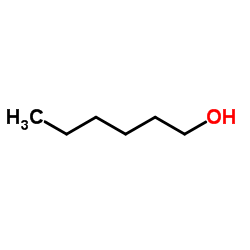 CAS#:111-27-3
CAS#:111-27-3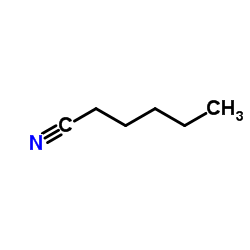 CAS#:628-73-9
CAS#:628-73-9 CAS#:111-26-2
CAS#:111-26-2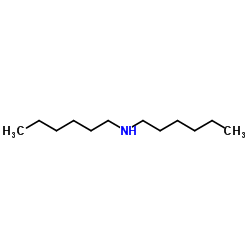 CAS#:143-16-8
CAS#:143-16-8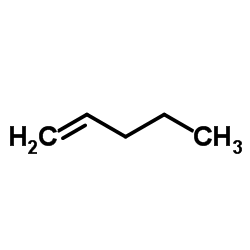 CAS#:109-67-1
CAS#:109-67-1 CAS#:201230-82-2
CAS#:201230-82-2 CAS#:23239-72-7
CAS#:23239-72-7 CAS#:71-41-0
CAS#:71-41-0 CAS#:67-56-1
CAS#:67-56-1 CAS#:404-90-0
CAS#:404-90-0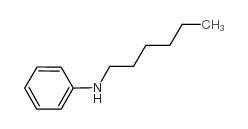 CAS#:4746-32-1
CAS#:4746-32-1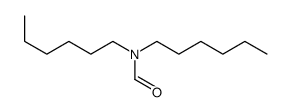 CAS#:14287-94-6
CAS#:14287-94-6 CAS#:66-25-1
CAS#:66-25-1 CAS#:110-54-3
CAS#:110-54-3 CAS#:52604-06-5
CAS#:52604-06-5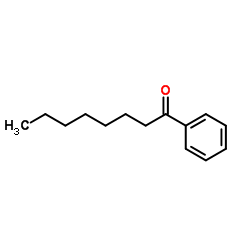 CAS#:1674-37-9
CAS#:1674-37-9
